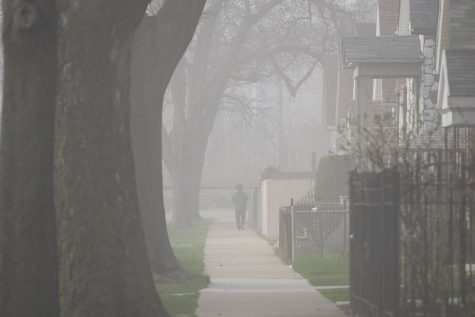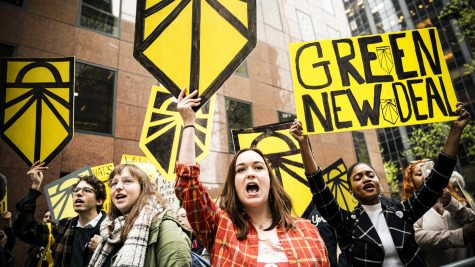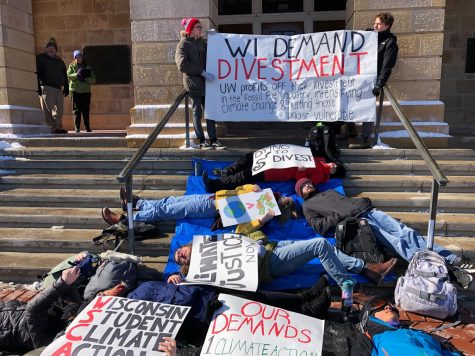To Find Success, GND Must Be Measured
In the 1930s, President Franklin D. Roosevelt introduced a set of legislative proposals under a New Deal that sought to navigate the consequences and investigate the underlying causes of the Great Depression. With these policies, FDR emphasized reforming fiscal, banking, and monetary policies to allow most American citizens to enjoy a greater level of financial stability than ever before. These proposed reforms included major pieces of legislation such as the National Industrial Recovery Act, the Securities Act, the National Labor Relations Act, the Social Security Act, and the Housing Act. While a majority of these policy recommendations faced a great deal of backlash from — and now have largely been repealed by — political conservatives, at the time they were successfully enacted into law because of Roosevelt’s measured approach; he found a way to satisfy the needs of the country without being overtly radical.
Nearly a century later, millions of Americans find themselves in a similar predicament of socioeconomic instability. This issue is even more pressing in the face of the COVID-19 crisis, which has led to significantly more unemployment claims than the Great Depression or the 2008 recession. Many solutions to our economic issues have been theorized, but the Green New Deal resolution seeks to save the economy and the environment. This resolution, officially proposed last year by Representative Alexandria Ocasio-Cortez (D–NY) and Senator Edward Markey (D–MA), consists of some ambitious legislative proposals: a living-wage job guarantee, universal higher education, net-zero greenhouse gas emissions, and more — all to be implemented within a single decade. If successful, these proposals would go a long way toward rectifying many of the systemic problems that disadvantaged Americans face, especially as these issues relate to the ongoing global climate crisis.
On the other hand, the resolution leaves out precisely the element that was ultimately essential in propelling FDR’s New Deal to success: measuredness. Indeed, a measured response to a major crisis, such as global warming, often requires transformative change. Exaggerating how rapidly this change could feasibly take place, while also failing to provide at least one viable source of funding, creates unnecessary room for valid criticism from both sides of the political spectrum. Rather unfortunately, this is exactly what Ocasio-Cortez and Markey’s Green New Deal has done: Many conservatives have attacked the resolution’s 10-year timeframe for being too idealistic and irrational, and even some progressives have critiqued their proposal for its utter lack of guidelines or options regarding fiscal policy. Essentially, although the Green New Deal is meant to save the environment by moving the country away from fossil fuels, its vague but radical language proposes slashing fossil fuels without clear plans for replacing the giant impact that oil has on the economy.
This naive oversight has been seized by critics on both sides; although they are few and far between, some progressives believe the Green New Deal doesn’t go far enough. On the right, conversations about the resolution are rampant with misinformation, falsely stating that it would effectively ban air travel and cows, among other ludicrous claims. However, disapproval from the left is more lucid, which significantly undermines the resolution.
This is merely to say that, while the resolution lays out non-binding, important goals for America to hopefully achieve in the near future, it also essentially functions as a framework for 21st-century progressive policy — the way that FDR’s New Deal did in the ’30s — and thus should be as foolproof as possible, which it is not. With respect to the resolution’s timeframe, each policy should have its own timeline or no timeline at all, with explanation as to why. And in terms of how to pay for the proposals, there are multiple effective rhetorical options available to progressives such as modern monetary theory.
Ironically, perhaps the greatest consequence of leaving gratuitous space for plausible ridicule of the Green New Deal is that it serves the resolution’s antithesis: climate inaction. Ocasio-Cortez and Markey’s Green New Deal, if left wholly unrevised, will likely continue to deter the people otherwise ready and willing to solve the climate crisis from supporting the only existing policy framework that treats global warming as the existential threat it is. If, however, the Green New Deal is revised or made anew with efforts to preempt valid critiques, it may stand the test of time — perhaps even beyond the progressive reforms of FDR’s New Deal of the 1930s.








